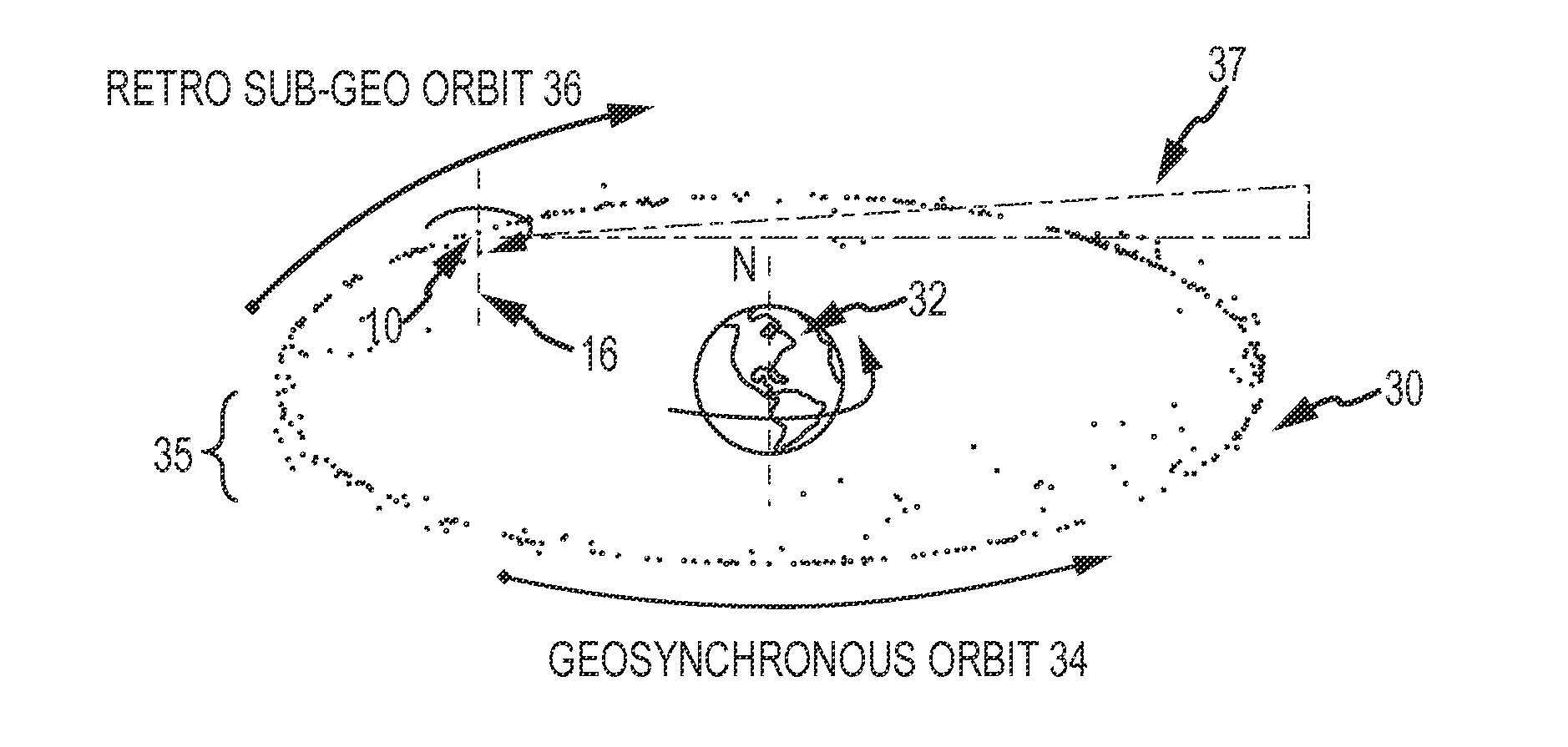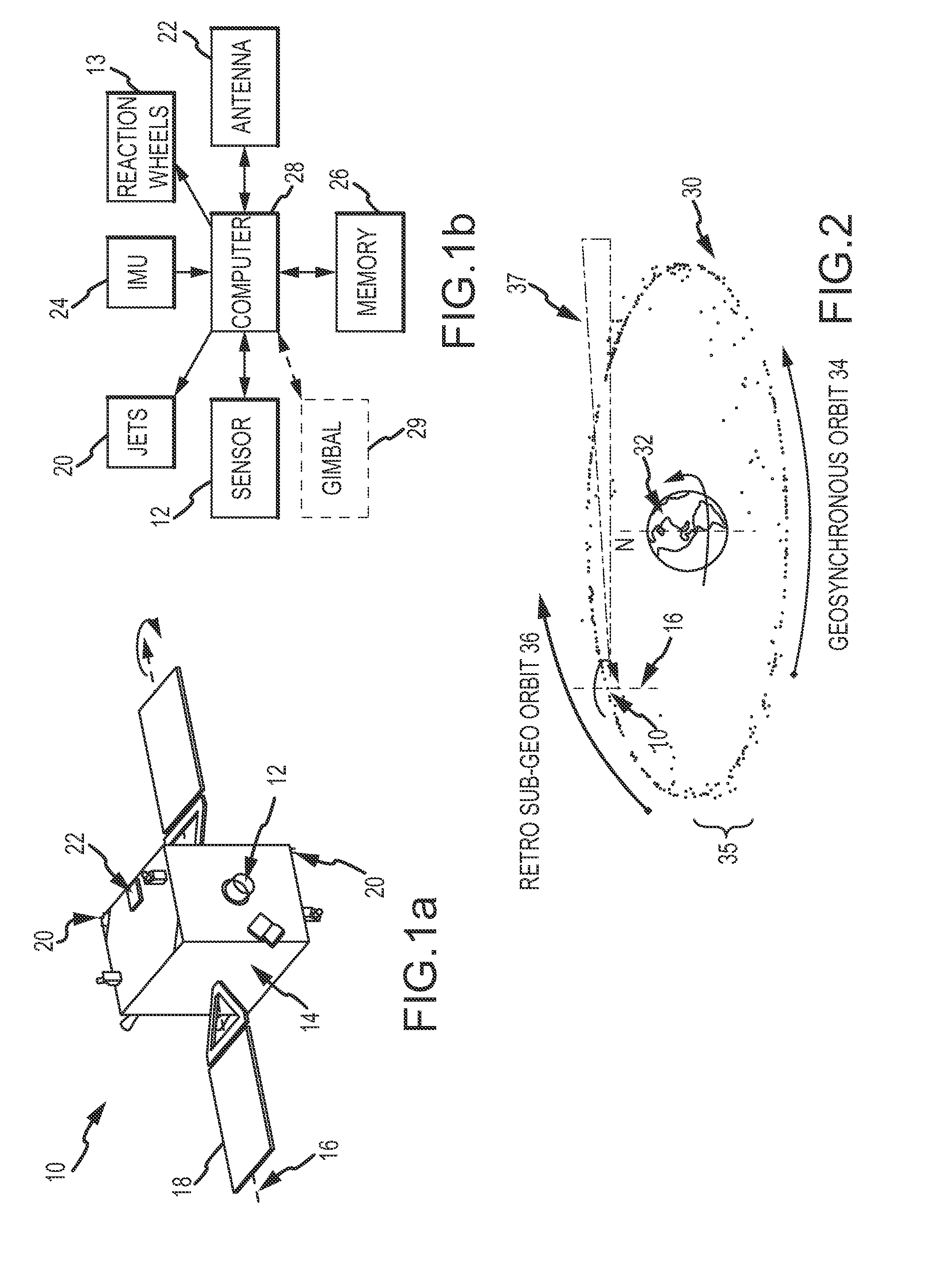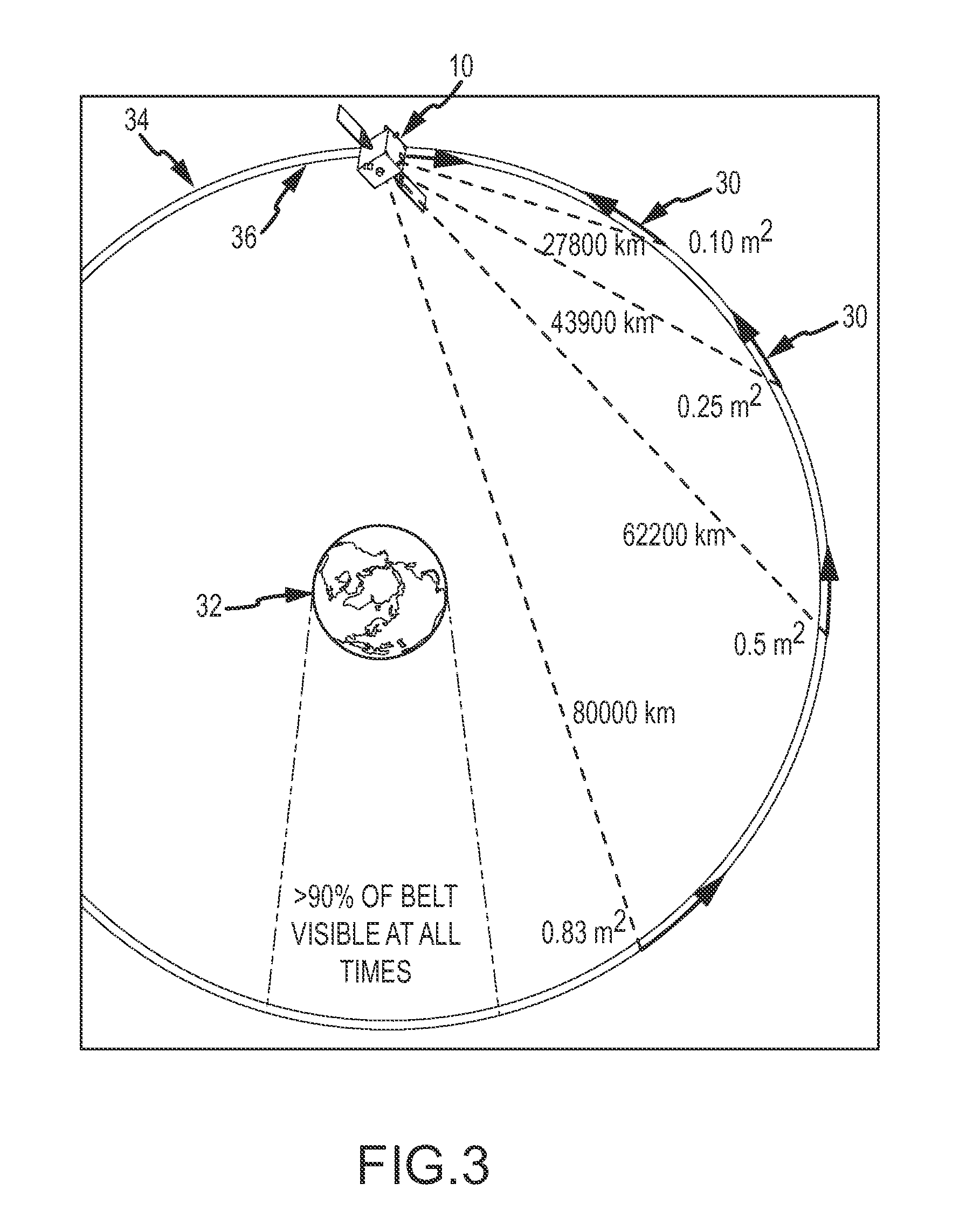Retro-Geo Spinning Satellite Utilizing Time Delay Integration (TDI) for Geosynchronous Surveillance
a geosynchronous surveillance and retro-geo spinning technology, applied in vehicle position/course/altitude control, process and machine control, instruments, etc., can solve the problems of limited sbss-leo's ability to resolve small and close objects, increase the weight of the satellite, and limit the system's ability to detect both small objects and closely spaced objects. , to achieve the effect of quick scan
- Summary
- Abstract
- Description
- Claims
- Application Information
AI Technical Summary
Benefits of technology
Problems solved by technology
Method used
Image
Examples
Embodiment Construction
[0023]The present invention describes a method of conducting geosynchronous surveillance by injecting an observer satellite having a sensor into a retro sub or super geosynchronous orbit at approximately zero inclination. The observer satellite spins about an approximately North-South axis in an Earth frame of reference to sweep the sensor's FOV around the geobelt to detect objects at ranges that vary from a few thousand km to about 80,000 km. Sensor TDI is synchronized to the observer satellite's spin-rate and possibly its target inertial LOS rate to the objects in its FOV to realize longer integration times. The LOS rate is negligible at long range but becomes appreciable at shorter ranges where the small and CSOs are resolved. If sensor TDI is synchronized to only the spin-rate and not the sum of the spin-rate plus the LOS rate the percentage of small objects and CSOs detected may drop significantly. This approach facilitates faster scans of the entire geobelt, more timely update...
PUM
 Login to View More
Login to View More Abstract
Description
Claims
Application Information
 Login to View More
Login to View More - R&D
- Intellectual Property
- Life Sciences
- Materials
- Tech Scout
- Unparalleled Data Quality
- Higher Quality Content
- 60% Fewer Hallucinations
Browse by: Latest US Patents, China's latest patents, Technical Efficacy Thesaurus, Application Domain, Technology Topic, Popular Technical Reports.
© 2025 PatSnap. All rights reserved.Legal|Privacy policy|Modern Slavery Act Transparency Statement|Sitemap|About US| Contact US: help@patsnap.com



